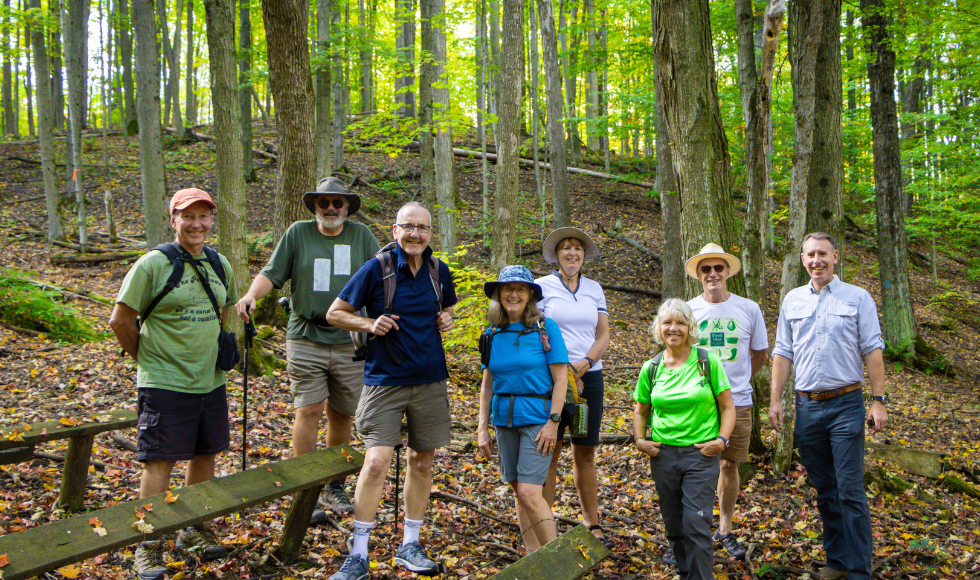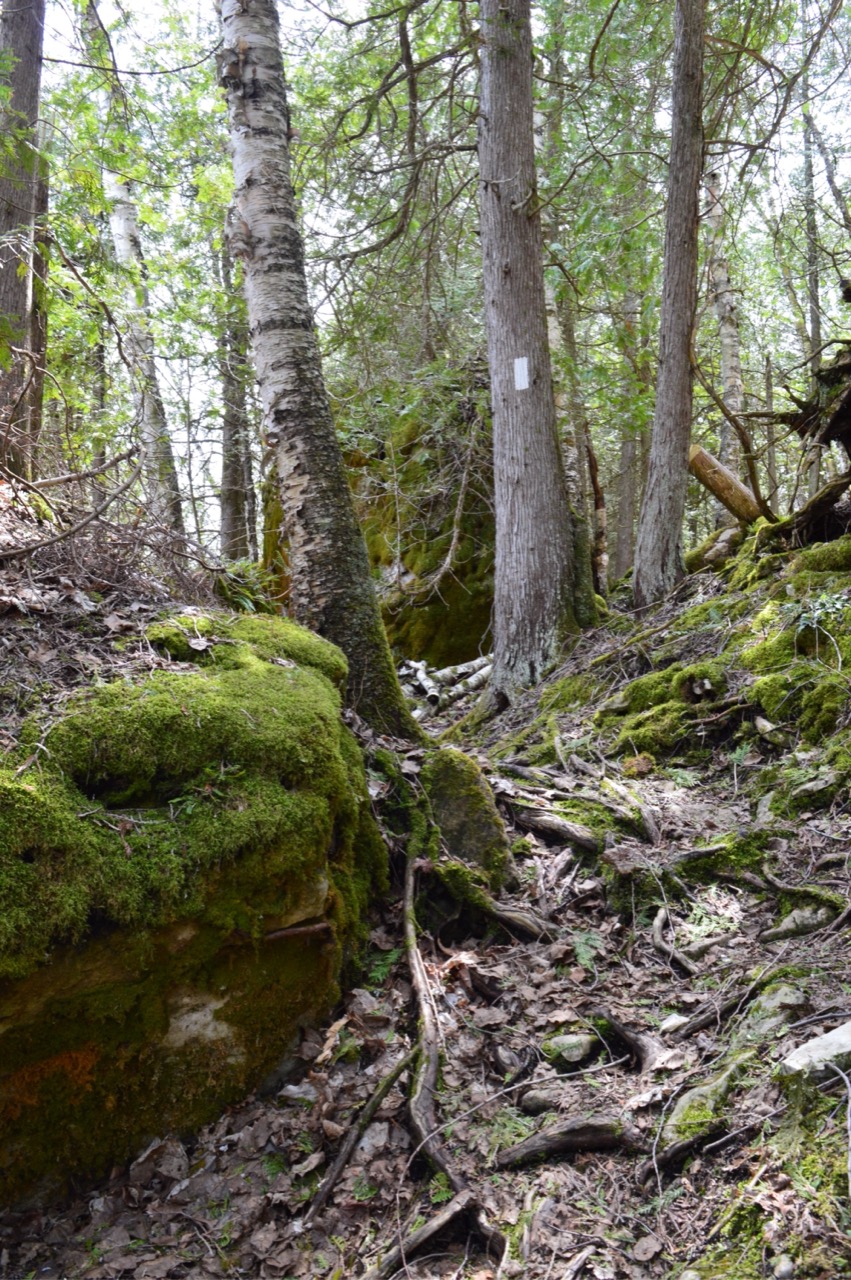So much more than a footpath: McMaster graduate on the importance of the Bruce Trail

McMaster graduate and Chief Executive Officer of the Bruce Trail Conservancy (BTC) Michael McDonald (far right) with BCT Club Leaders. (Photo courtesy of the Bruce Trail Conservancy).
If you’ve walked the Niagara Escarpment any time in the last six decades, you know the Bruce Trail. You know the reassuring feeling of seeing the distinctive blaze of white paint that marks trees on its main trail.
You likely have a deep appreciation for the trail’s terrains, plants, animals and vistas. You probably even have a favourite stretch of the trail from among the more than 900 kilometres of its entirety.
Michael McDonald, McMaster graduate and Chief Executive Officer of the Bruce Trail Conservancy, wants you to know the Bruce Trail is about much more than a ribbon of walkable ground that reaches from Queenston to Tobermory.

When McDonald ’96 arrived at McMaster as a first-year student, his plan was to study history and likely become a teacher. As it turned out, that wasn’t the path he would take.
“I got a summer job at a marketing place and ended up staying there for 23 years,” he says.
As he forged a career in the private sector, McDonald was also becoming an increasingly dedicated volunteer in support of nature trails. For him, it was an interest with deep roots.
“My story is a very common Hamilton story,” McDonald says. “My dad was a steelworker at Stelco, so when he wasn’t working, one of the recreational activities we did – and it was free – was he would take me and my two brothers out onto the trail.
So, my very first memories of the Bruce Trail and nature were all about exploring. The Bruce Trail was my dad and my brothers and finding snakes and turtles and frogs and really falling in love with the wildlife.”
Still an avid hiker as an adult, McDonald volunteered with the Bruce Trail Conservancy where he helped maintain the trail and then became a certified hike leader.
“I was taking people onto the trail and watching them fall in love with nature,” McDonald says. “I got so much joy from that. Fast forward a couple of years when the Bruce Trail was looking for a new CEO, I thought I would take all of my private sector skills and marry them with my true passion which is connecting people to nature and protecting ecosystems.”
McDonald has now been in what he calls his “dream job” for five years. He leads an organization that may be best known for the trail it stewards, but is also one of Ontario’s largest land trusts, one of Canada’s top 100 charities according to Charity Intelligence and a massive volunteer management organization with more than 1,400 volunteers serving in a variety of roles.
When McDonald got the job as chief executive officer, he wrote letters to several environmental heroes including the legendary primatologist Jane Goodall who wrote back. One particular sentence in her letter has stuck with McDonald ever since: We will never forget our time in the forest.
“I think about that a lot,” he says. “In this role, I’ve come to see how important the Bruce Trail is to people’s lives. Our time in the forest is precious time and special time.”
That kind of thinking reflects the broad environmental mission of the conservancy.

As McDonald says, “Our mission has always been about protecting the Niagara Escarpment and the ecosystems along the escarpment for the benefit of all, including the species that are there, and many of those species are at risk. As an organization, we’ve really been focused on protecting more land. … We’ve got development pressures, which are real, and we’re facing the climate crisis and the biodiversity crash, so we’re feeling a great sense of urgency around protecting as much land as we can.”
The trail itself represents only one percent of the total lands the Bruce Trail Conservancy owns. The vast majority of the conservancy’s land is in the conservation corridor that surrounds the trail.
“The original dream was always to protect the Niagara Escarpment and the trail is the tool to get people to fall in love with it,” McDonald says. “As we’ve continued to mature as an organization, we really have become one of the leading conservation organizations in Canada.”
Still, the iconic, 60-year-old trail is irreplaceable.
It offers people an invitation and access so they can immerse themselves in nature. Everyone who experiences that unforgettable time in the forest on the Bruce Trail is part of a movement that is protecting the Niagara Escarpment UNESCO World Biosphere, one of the world’s greatest natural spaces.
On April 25 at 7:00 pm, Mac alumni can hear more from McDonald about the first 60 years of the Bruce Trail along with the conservancy’s ambitious plans for the start of its next six decades. McDonald’s online presentation called “More Than a Footpath: 60 Years of the Bruce Trail” is part of the McMaster Alumni Association’s Rejuvenate series. For more information and to register, click here.


